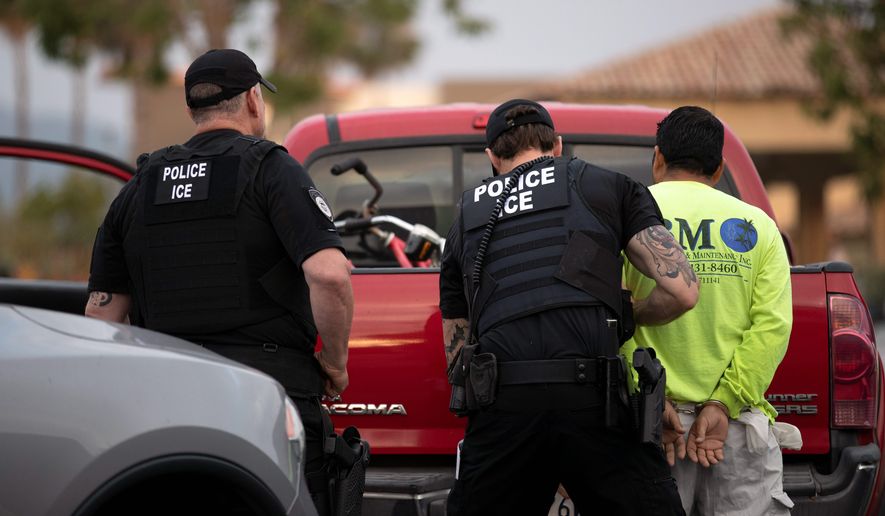More than 17,000 undocumented immigrants released by sanctuary cities since 2013 remain at large, according to an audit Monday by the Homeland Security inspector general, who detailed the growing trend of states and localities refusing to cooperate with ICE.
The report adds heft to the government’s argument that sanctuary cities are dangerous.
The inspector general said that when U.S. Immigration and Customs Enforcement teams have to go out into communities to arrest people, it’s more dangerous for the target migrants, the officers and the community. It also takes far more resources, the audit found.
“For example, ICE reported sending more than 20 officers to arrest three MS-13 gang members in a major metropolitan city,” the inspector general said.
The report also suggests the number of immigrants who are in the U.S. illegally could be much higher than the government has said. The inspector general said the last Homeland Security estimate put the number at 12 million undocumented immigrants as of 2015 — but an academic study released in 2018 put it at 22.1 million.
Deporting large numbers of undocumented immigrants is impossible on ICE’s current budget, so the agency instead focuses on high-priority targets, usually going after migrants with criminal entanglements who end up in prison or jail.
When ICE learns of a deportable migrant in custody, it issues a “detainer” requests to the federal, state or local authorities holding the target, asking to be notified of release — and also asking that the person be held up to 72 hours for pickup.
Sanctuary cities and states refuse such cooperation to varying degrees.
Some will refuse the 48-hour hold, arguing they can’t legally keep someone beyond the time needed for the local charges. But they will notify ICE to be on hand for a pickup. Other jurisdictions refuse all communications.
And some fall in between, saying they’ll cooperate only after someone has been convicted of a serious crime.
ICE has been engaged in an escalating battle with sanctuaries, dating back to the Obama administration.
From fiscal 2014 to fiscal 2019, the agency made 516,900 arrests at prisons or jails. That accounted for 84% of ICE’s arrests during that time. But jurisdictions also refused 58,900 detainer requests during those six years.
Of those refused requests, ICE managed to track down about 70%. But 17,700 were still at large as of Sept. 30, the inspector general reported.
ICE has to adjust, forming teams of deportation officers to go out into the community to track down those that get released by uncooperative governments, the inspector general said.
And releasing criminals from prisons and jails is more dangerous, the inspector general concluded.
“Moving arrests from secure, controlled locations (jails) to unknown environments (homes, workplaces, or the public) places heavy demand on ICE personnel and increases safety risks for officers, arrestees, and local communities,” the audit said.
ICE, in its official response to the report, said other undocumented immigrants also suffer from sanctuaries.
“Sanctuary policies leave ICE with no choice but to increase enforcement in neighborhoods and workplaces to locate and arrest these persons while they are at-large — increasing the likelihood that other individuals previously not targeted for arrest will be taken into ICE custody,” said Stephen A. Roncone, ICE’s chief financial officer.
Acting Homeland Security Secretary Chad Wolf recently confirmed plans to redeploy special tactical Border Patrol teams from the border to the interior to assist the ICE teams that do go out into communities to make arrests in sanctuary jurisdictions.
• Stephen Dinan can be reached at sdinan@washingtontimes.com.




Please read our comment policy before commenting.